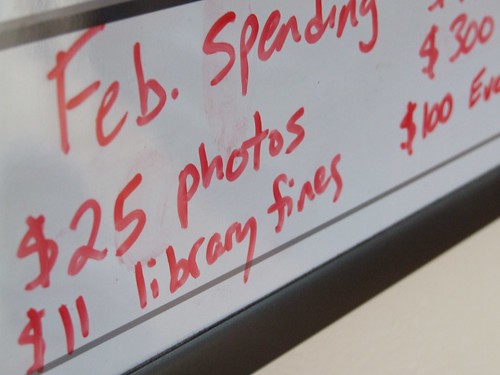
Like many others, I have been horrified by the collapse of a garment factory in Bangladesh last week - with a death toll now over 300 people. I saw a political cartoon this week, which I now cannot find again, that showed a woman holding up a garment to herself in a department store and saying "does this make me look like I'm oblivious to global working conditions?" I'm just horrified that the real price for our cheap and semi-disposable clothing is being paid by low-wage and high-risk workers in poor nations.
I decided to do a little look through our clothing to try and figure out where most of it was made. These two piles of my children's clothing are pretty typical: a mix of one homemade item, a few gifts, a few hand-me-downs, lots of stuff bought in thrift shops or on ebay, and a few things bought new from Lands End or Costco. They were made in:
The Philippines
Sri Lanka
Bangladesh
Korea
India
Honduras
China
Vietnam
Cambodia
My homemade item that was made right here
and one item said "Made in the USA"
I can't personally travel to all these places to see how workers are treated in each country, but I tried googling it to get an idea. It was actually very difficult to get any sort of information, other than a disquieting sense that, no, it's not good in any poor nation with minimal government regulations.
So what to do? I'll keep doing some of what I have been doing anyway (for other reasons).
1. Reduce. There's a reason it comes first in the "reduce, reuse, recycle" mantra. Just reducing the amount of clothing that my family purchases and owns is the best step to take for the environment, my wallet, and my laundry load. It also would mean less contribution to the exploitation of workers. My grandma used to say "buy quality, not quantity", and she was right. I'm thinking about the notion of the Minimalist Wardrobe, as well.
2. Reuse. A lot of that clothing shown above was purchased used. (In fact, in those laundry piles only the socks, underwear, two pairs of pants, and one pair of pajamas were purchased new.) Yes, it was originally made cheaply, but reusing it still is better for the environment, my wallet, and my contribution to worker-exploitation.
3. Mend what you have, or upcycle it (or when that fails use it as a cloth rag). When clothing gets worn out around here, I fix it, or it gets upcycled into hats, rugs, quilts, etc. When all else has been tried, it gets used as a cloth rag. We don't use any disposable paper products here except toilet paper. However, this post isn't about disposable paper. But mending and upcycling can extend the lifespan of an article of clothing, thereby reducing the impact to environment, wallet, and worker-exploitation.
4. Buy Fair Trade. This would be ideal. But I've done a bit of internet searching about fair trade options this week and I find them slim for men and almost non-existent for kids. I can probably dress myself Fairly, but that's partly because in my work setting and living in the Pacific Northwest I can get away with a certain "hippy" look to my fashion. My favorite Fair Trade sources:
- Maggie's Organics is my usual source for women's socks, tights, and leggings. My local food co-op carries them, as well as the Fair Trade store in town.
- Mata Traders is a Fair Trade line that is carried in the store in town, and I've purchased two sundresses from them that I'm very happy with.
- Fair Indigo carries a good selection (for women), and I always check them out, although I have yet to purchase anything.
- We're really lucky to have a Fair Trade store in town, that sources from all around the world but can tell you the "story" of every item in the store. I've bought many things there and will continue to do so (such as Ethletic shoes).
Fair trade is usually better for the environment (most is organic as well as fair trade) and it's definitely better for the workers. It is NOT better for my wallet.
5. Buy Made in the USA. It's really hard to find anything Made in the USA in the box stores. But there are some websites that specialize, so that is helpful. A cursory search, however, leaves me with the impression that I'll only be able to buy really basic clothing and stuff more suited to outdoor work or camping. Which is fine - we need that stuff too - but it won't be a complete source. Buying USA made is probably not really better for the environment (maybe less factory pollution because of regulations, maybe less energy used to transport it here to me?), but it is better for worker conditions and for our own economy. Not better on my wallet.
6. Make it myself. I enjoy sewing, but this isn't going to become the main source of our wardrobes. For one thing, I just don't have time. For another, I can't make some of the stuff we need: socks, underwear, my husband's button-up shirts for work (he's particular), or jeans. And where does the fabric come from? I like to order from Near Sea Naturals, but if I only get my fabric there this is once gain Good for the Environment, Good for Workers (well, it's more work for me, but ) But NOT good for my wallet, or my time.
So that is my Six-Point Plan: Reduce, Reuse, Repair, Fair Trade, Buy USA, Make it Myself. I'm really going to miss my Lands End core wardrobe staples, though.
































